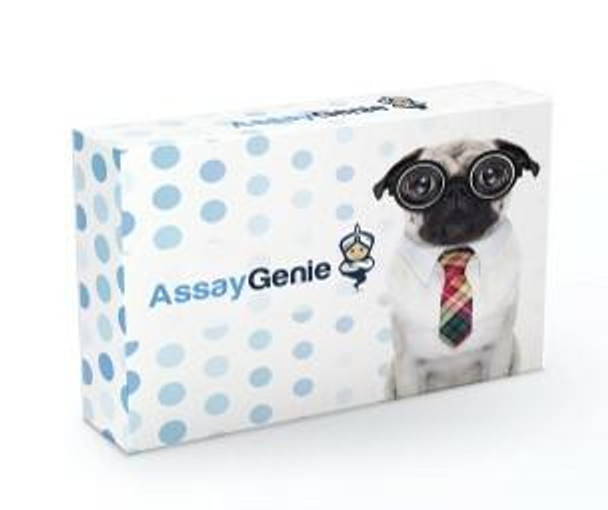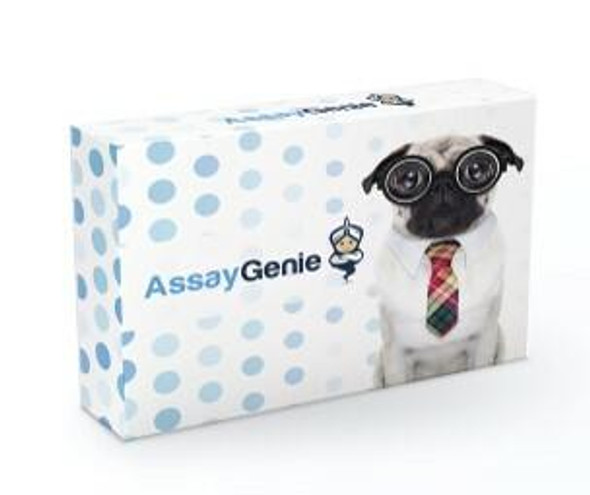Mouse GIP PharmaGenie ELISA Kit (SBRS0053)
- SKU:
- SBRS0053
- Product Type:
- ELISA Kit
- Reactivity:
- Mouse
- Applications:
- ELISA
- ELISA Type:
- Competitive
Description
Mouse GIP PharmaGenie ELISA - Kit Information
Gastric inhibitory polypeptide (GIP), also known as the glucose-dependent insulinotropic peptide belongs to the secretin family. GIP is derived from a 153-amino acid proprotein and circulates as a biologically active 42-amino acid peptide. GIP is synthesized by K cells, which are found in the mucosa of the duodenum and the jejunum of the gastrointestinal tract as well as in beta-cells in the pancreas. GIP has been reported to play a role in neutralizing stomach acid to protect the small intestine from acid damage, reducing the rate at which food is transferred through the stomach, and inhibiting the GI motility and secretion of acid. Recently it has been believed that the function of GIP is to induce insulin secretion, which is primarily stimulated by hyperosmolarity of glucose in the duodenum. In addition, GIP has been reported to have significant effects on fatty acid metabolism through stimulation of lipoprotein lipase activity in adipocytes. GIP release has been demonstrated in the ruminant animal and may play a role in nutrient partitioning in milk production (lipid metabolism). GIP also has clinical applications. It has been reported that Type 2 diabetics are not responsive to GIP. Additionally, studies with knockout mice suggested that absence of GIP receptors correlates with resistance to obesity.
Mouse GIP PharmaGenie ELISA - Kit Data
| Product SKU: | SBRS0053 |
| Size: | 96T |
| Application: | Cross Reactivity: This ELISA kit shows no cross-reactivity with any of the cytokines tested: Ghrelin, Nesfatin, Angiotensin II, NPY and APC. |
| Uniprot: | P48756 |
| Gene ID: | 14607 |
| Gene Names: | GIP |
| Synonyms: | Gastric inhibitory polypeptide (GIP) (Glucose-dependent insulinotropic polypeptide) |
| Target Species: | Human, Mouse, Rat |
| Compatible Sample Types: | Cell Culture Supernatants, Serum |
| Design Principle: | Competition-based |
| Method of Detection: | Colorimetric |
| Quantitative/Semi-Quantitative: | Quantitative |
| Range: | 0.1-1,000 pg/ml |
| Sensitivity: | 1.25 pg/ml |
| Recommended Dilution: | Human: 2X, Mouse: 2X, Rat: 2X |
| Storage/Stability: | Standard, Biotinylated Gastric Inhibitory Polypeptide peptide, and Positive Control should be stored at -20°C after arrival. Avoid multiple freeze-thaws. The remaining kit components may be stored at 4°C. Opened Microplate Wells and antibody (Item N) may be stored for up to 1 month at 2 to 8°C. Return unused wells to the pouch containing desiccant pack and reseal along entire edge. |
Kit Components:
| 1. | Pre-Coated 96-well Strip Microplate |
| 2. | Wash Buffer |
| 3. | Standard Peptide |
| 4. | Assay Diluent(s) |
| 5. | Biotinylated Peptide |
| 6. | HRP-Streptavidin |
| 7. | TMB One-Step Substrate |
| 8. | Stop Solution |
| 9. | Assay Diagram |
| 10. | Positive Control Sample |
| 11. | Capture Antibody |
| 12. | Technical Manual |
Other materials and equipment required:
The Assay Genie Mouse GIP ELISA Kit will require other equipment and materials to carry out the assay. Please see list below for further details.
- Distilled or deionized water
- Precision pipettes to deliver 2 ul to 1 ml volumes
- Adjustable 1-25 ml pipettes for reagent preparation
- 100 ml and 1 liter graduated cylinders
- Tubes to prepare standard and sample dilutions
- Orbital shaker
- Aluminum foil
- Saran Wrap
- Absorbent paper
- Microplate reader capable of measuring absorbance at 450nm
- SigmaPlot software (or other software that can perform four-parameter logistic regression models)









